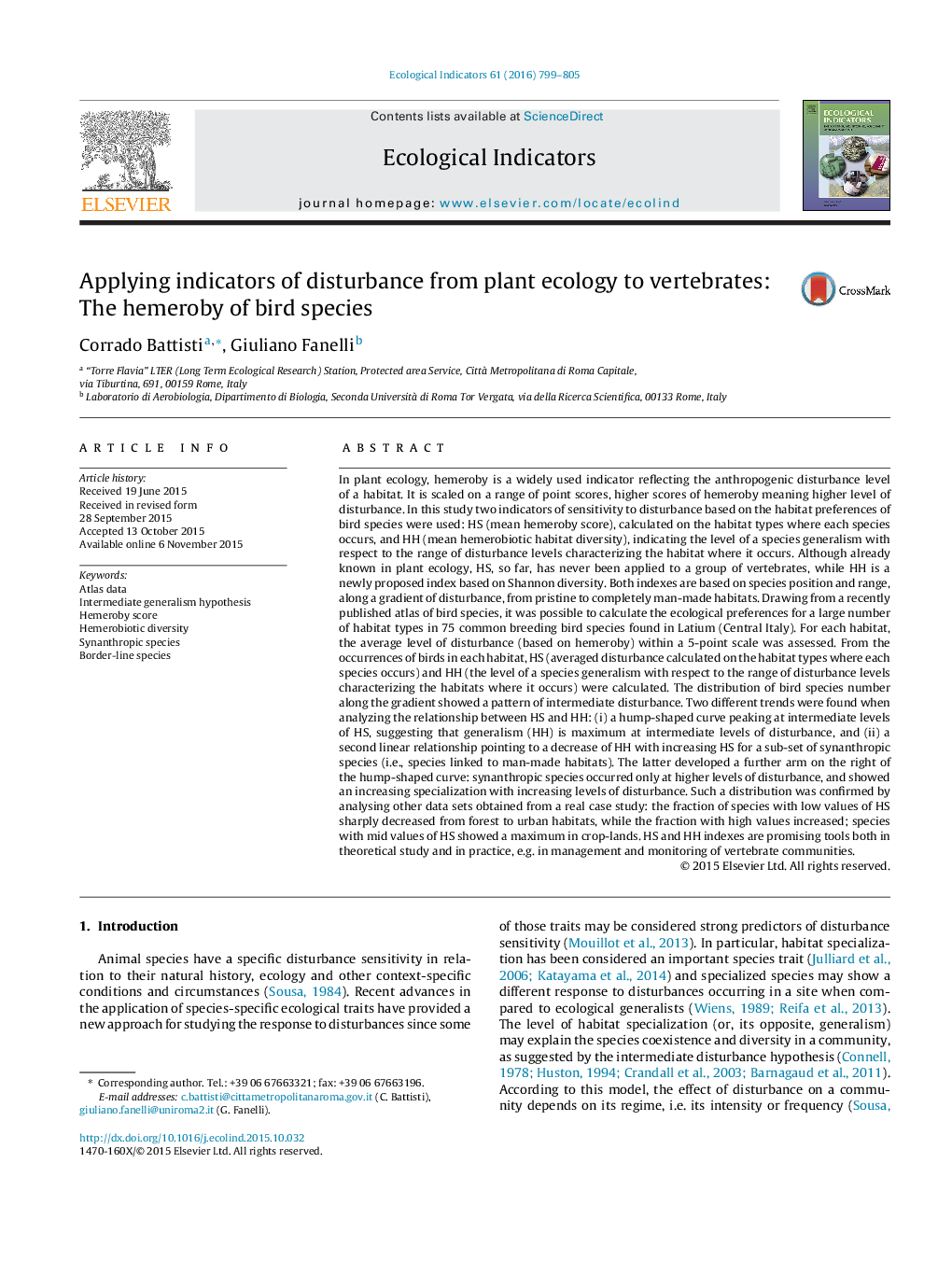| کد مقاله | کد نشریه | سال انتشار | مقاله انگلیسی | نسخه تمام متن |
|---|---|---|---|---|
| 6293722 | 1303105 | 2016 | 7 صفحه PDF | دانلود رایگان |
عنوان انگلیسی مقاله ISI
Applying indicators of disturbance from plant ecology to vertebrates: The hemeroby of bird species
ترجمه فارسی عنوان
اعمال شاخص های اختلال از محیط زیست گیاهان به مهره داران: شبیه سازی گونه های پرنده
دانلود مقاله + سفارش ترجمه
دانلود مقاله ISI انگلیسی
رایگان برای ایرانیان
موضوعات مرتبط
علوم زیستی و بیوفناوری
علوم کشاورزی و بیولوژیک
بوم شناسی، تکامل، رفتار و سامانه شناسی
چکیده انگلیسی
In plant ecology, hemeroby is a widely used indicator reflecting the anthropogenic disturbance level of a habitat. It is scaled on a range of point scores, higher scores of hemeroby meaning higher level of disturbance. In this study two indicators of sensitivity to disturbance based on the habitat preferences of bird species were used: HS (mean hemeroby score), calculated on the habitat types where each species occurs, and HH (mean hemerobiotic habitat diversity), indicating the level of a species generalism with respect to the range of disturbance levels characterizing the habitat where it occurs. Although already known in plant ecology, HS, so far, has never been applied to a group of vertebrates, while HH is a newly proposed index based on Shannon diversity. Both indexes are based on species position and range, along a gradient of disturbance, from pristine to completely man-made habitats. Drawing from a recently published atlas of bird species, it was possible to calculate the ecological preferences for a large number of habitat types in 75 common breeding bird species found in Latium (Central Italy). For each habitat, the average level of disturbance (based on hemeroby) within a 5-point scale was assessed. From the occurrences of birds in each habitat, HS (averaged disturbance calculated on the habitat types where each species occurs) and HH (the level of a species generalism with respect to the range of disturbance levels characterizing the habitats where it occurs) were calculated. The distribution of bird species number along the gradient showed a pattern of intermediate disturbance. Two different trends were found when analyzing the relationship between HS and HH: (i) a hump-shaped curve peaking at intermediate levels of HS, suggesting that generalism (HH) is maximum at intermediate levels of disturbance, and (ii) a second linear relationship pointing to a decrease of HH with increasing HS for a sub-set of synanthropic species (i.e., species linked to man-made habitats). The latter developed a further arm on the right of the hump-shaped curve: synanthropic species occurred only at higher levels of disturbance, and showed an increasing specialization with increasing levels of disturbance. Such a distribution was confirmed by analysing other data sets obtained from a real case study: the fraction of species with low values of HS sharply decreased from forest to urban habitats, while the fraction with high values increased; species with mid values of HS showed a maximum in crop-lands. HS and HH indexes are promising tools both in theoretical study and in practice, e.g. in management and monitoring of vertebrate communities.
ناشر
Database: Elsevier - ScienceDirect (ساینس دایرکت)
Journal: Ecological Indicators - Volume 61, Part 2, February 2016, Pages 799-805
Journal: Ecological Indicators - Volume 61, Part 2, February 2016, Pages 799-805
نویسندگان
Corrado Battisti, Giuliano Fanelli,
